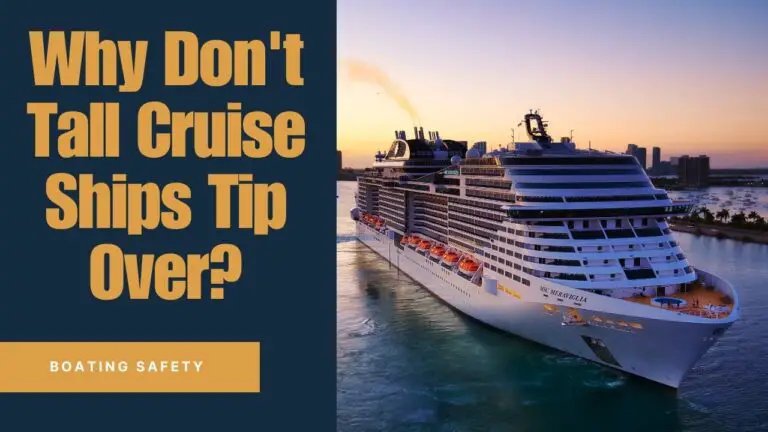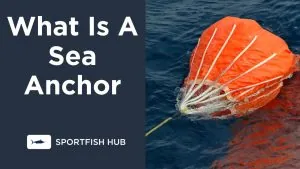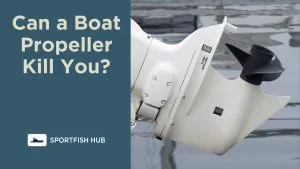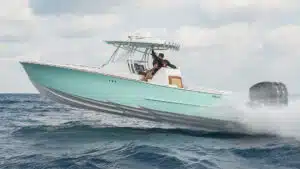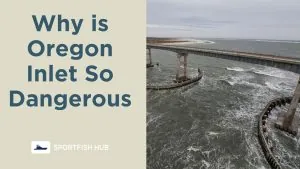You may have wondered why tall cruise ships don’t tip over, especially when you consider their enormous size and the thousands of passengers they carry.
Today’s modern cruise ships, such as the Symphony of the Seas, Carnival’s Mardi Gras, and the much-anticipated Icon of the Seas, are marvels of technology, maritime tradition, and innovation.
In this article, we will explore the factors that contribute to the stability of these towering vessels, including:
- Cruise ship stabilizers
- The chances of a cruise ship tipping over in rough seas
- And their ability to withstand rogue waves.
Key Takeaways
- Cruise ships remain stable due to a combination of engineering and physics principles, ensuring their safety even in unfavorable weather conditions.
- Buoyancy plays a crucial role in keeping cruise ships afloat by displacing water equivalent to their mass.
- A low center of gravity, achieved by placing heavy components like engines and ballast tanks in the lower half of the ship, contributes to overall stability.
- Wide, round-bottom hull designs reduce drag and minimize swaying, enhancing passenger comfort and ship stability.
- Ballast tanks help maintain balance by pumping water from one side of the ship to the other during rough seas or emergencies.
- Modern cruise ships are equipped with stabilizers that counteract the roll (sideways motion) of the ship, further contributing to stability and comfort.
Why don’t big ships sink (Video)
Key Factors of Cruise Ship Stability
Cruise ships are designed to stay afloat and not tip over due to a combination of engineering and physics principles. Some key factors that contribute to their stability include:
- Buoyancy: Cruise ships are designed with an average density lower than water, enabling them to float by displacing water equivalent to their mass. The buoyancy force pushing the ship up balances the weight of the ship pulling it down.
- Low center of gravity: The heaviest components of a cruise ship, such as engines, machinery, fuel stores, and ballast tanks, are placed in the lower half of the ship. This lowers the center of gravity, making it more difficult for the ship to tip over.
- Wide, round-bottom hull: Cruise ships have a wide hull with a round bottom, which provides stability and reduces drag, allowing for smooth movement through the water. The rounded edges also minimize the ship’s tendency to sway and rock, reducing seasickness.
- Ballast tanks: Cruise ships are equipped with ballast tanks that contain water, which can be pumped from one side of the ship to the other to maintain balance in case of rough seas or emergencies.
How Do Cruise Ship Stabilizers Work?
Modern cruise ships have wing-like stabilizers that reduce the ship’s roll (sideways motion). They can be controlled independently by the ship’s officers to counteract the effects of ocean currents and ship roll. Stabilizers are typically located near the bottom of the ship and extend outward when needed. These fins work by generating lift in the opposite direction of the roll, keeping the ship stable and minimizing passenger discomfort.
Can a Cruise Ship Survive a Rogue Wave?
A rogue wave is a massive, unexpected wave that can pose a significant threat to ships at sea. Cruise ships are designed to withstand extreme weather conditions, including rogue waves. The International Maritime Organization (IMO) has established strict safety standards for cruise ships, including hull strength, watertight integrity, and stability requirements. As a result, modern cruise ships are built with robust structural integrity and are equipped with advanced navigation systems that can help avoid dangerous wave encounters.
What Are the Chances of a Cruise Ship Tipping Over?
The chances of a cruise ship tipping over are extremely low, thanks to the engineering and design principles discussed earlier. Cruise ship incidents are rare; most are caused by human error, equipment malfunction, or extreme weather conditions. The combination of buoyancy, a low center of gravity, a wide hull, ballast tanks, and stabilizers ensures that cruise ships remain stable even in challenging situations.
Conclusion
In summary, cruise ships are able to stay upright and not tip over due to their low center of gravity, wide hull, buoyancy, ballast tanks, and stabilizers. Naval architects and engineers carefully design these ships to ensure their stability and seaworthiness even in unfavorable weather conditions.
FAQ
Boats do not sink because they are designed to displace a sufficient amount of water to counteract their weight. This principle is based on the Archimedes’ principle of buoyancy, which states that an object submerged in a fluid experiences an upward force equal to the weight of the fluid it displaces.
Yes, boats at sea are not only capable of surviving a tsunami they are actually safer at sea from tsunamis than in port or at the dock
According to research, in the past 100 years only 22 cruise ships have sunk, and many of those were not at sea with passengers but while berthed or being towed.

